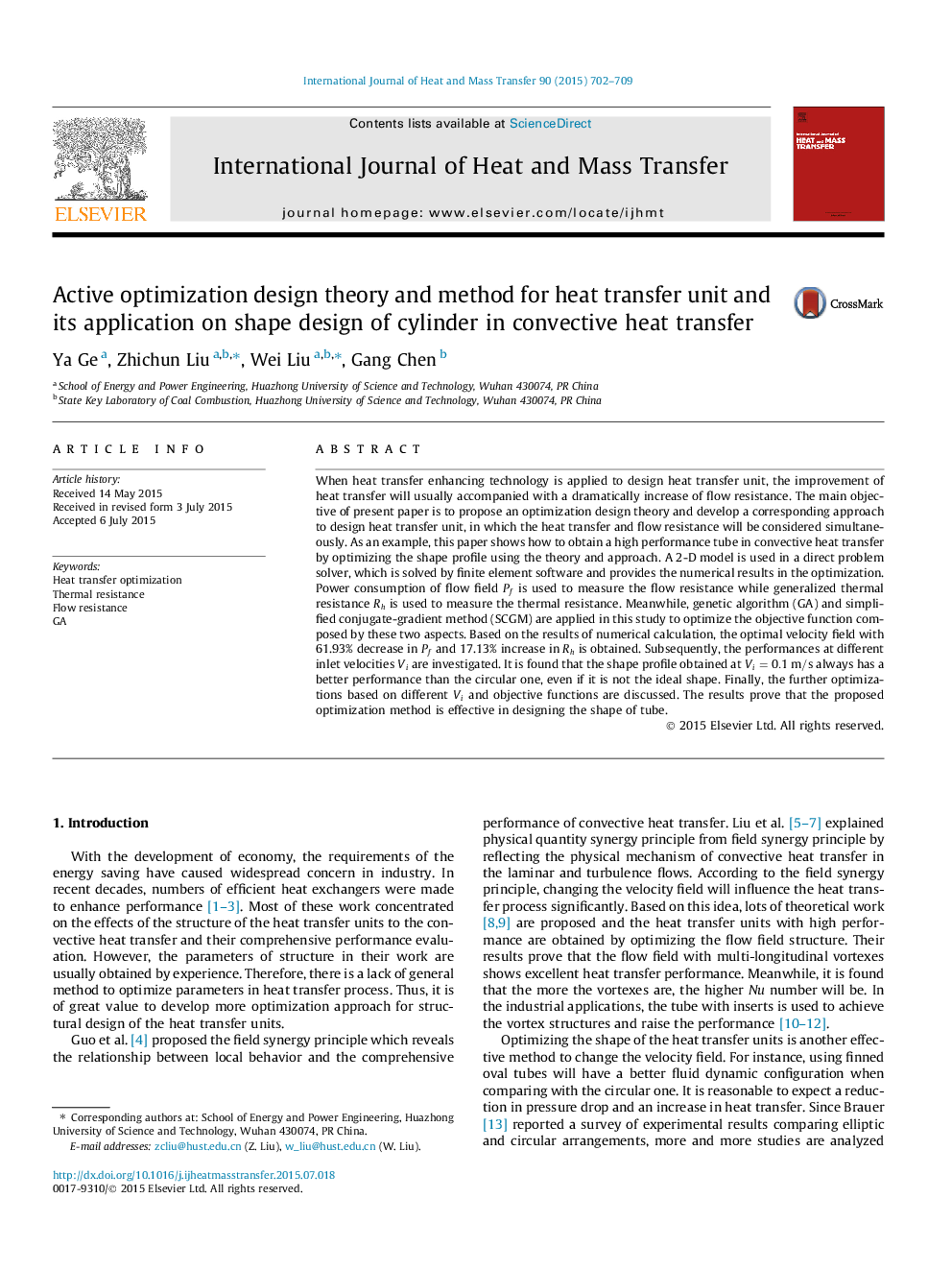| Article ID | Journal | Published Year | Pages | File Type |
|---|---|---|---|---|
| 7056526 | International Journal of Heat and Mass Transfer | 2015 | 8 Pages |
Abstract
When heat transfer enhancing technology is applied to design heat transfer unit, the improvement of heat transfer will usually accompanied with a dramatically increase of flow resistance. The main objective of present paper is to propose an optimization design theory and develop a corresponding approach to design heat transfer unit, in which the heat transfer and flow resistance will be considered simultaneously. As an example, this paper shows how to obtain a high performance tube in convective heat transfer by optimizing the shape profile using the theory and approach. A 2-D model is used in a direct problem solver, which is solved by finite element software and provides the numerical results in the optimization. Power consumption of flow field Pf is used to measure the flow resistance while generalized thermal resistance Rh is used to measure the thermal resistance. Meanwhile, genetic algorithm (GA) and simplified conjugate-gradient method (SCGM) are applied in this study to optimize the objective function composed by these two aspects. Based on the results of numerical calculation, the optimal velocity field with 61.93% decrease in Pf and 17.13% increase in Rh is obtained. Subsequently, the performances at different inlet velocities Vi are investigated. It is found that the shape profile obtained at Vi=0.1m/s always has a better performance than the circular one, even if it is not the ideal shape. Finally, the further optimizations based on different Vi and objective functions are discussed. The results prove that the proposed optimization method is effective in designing the shape of tube.
Related Topics
Physical Sciences and Engineering
Chemical Engineering
Fluid Flow and Transfer Processes
Authors
Ya Ge, Zhichun Liu, Wei Liu, Gang Chen,
